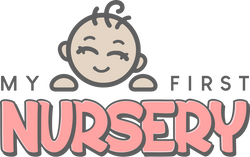
When Does Sleep Regression Happen?
When Does Sleep Regression Happen?
Sleep regression is a term that makes even the calmest parents a little nervous. It can feel like a step back in your baby’s sleep routine, right when you were starting to get into a groove. If you're a first-time parent worried about sleep regression, you’re not alone. This post will explain what sleep regression is, when it’s most likely to happen, and how to handle it when it does.
What Is Sleep Regression?
Sleep regression occurs when a baby who was sleeping well suddenly starts waking up more frequently, struggling to nap, or resisting bedtime. These changes often catch parents off guard, especially if they’ve recently been enjoying longer stretches of uninterrupted sleep.
But, it’s important to remember that sleep regression is temporary. These disruptions typically last between 2 and 6 weeks, although the intensity can vary from baby to baby. Some infants might experience mild disruptions, while others will have full-blown sleep struggles. Either way, these regressions are a normal part of your baby’s development.

When Does Sleep Regression Happen?
Sleep regressions commonly occur during the first few years of life, and they often coincide with significant developmental milestones. Here’s a quick guide to the most common ages when sleep regression might strike:
4 Months: The first and most notorious sleep regression usually happens around the 4-month mark. At this stage, your baby’s sleep cycles mature, becoming more like adult sleep patterns. As they move through light and deep sleep phases, they may wake more easily.
8–10 Months: During this time, your baby may be learning to crawl, stand, or even walk, leading to increased wakefulness at night. Separation anxiety also tends to peak around this age, making bedtime and nap times more challenging.
12 Months: The transition from baby to toddler brings its own challenges, including a possible sleep regression. At this stage, many babies are starting to walk, which can disrupt their sleep patterns as they process new skills.
18 Months: As your baby becomes more independent, the 18-month sleep regression might strike. Teething, separation anxiety, and growing independence can all contribute to changes in sleep routines.
2 and 3 Years: Yes, sleep regression can even happen in toddlerhood. At this stage, toddlers are grappling with increased independence, transitions (like moving from a crib to a bed), and possibly even the arrival of a sibling—all of which can impact their sleep.
Signs of Sleep Regression
It’s not always easy to tell if your baby is going through sleep regression, especially if they’ve had inconsistent sleep patterns before. However, some common signs include:
Frequent Night Waking: If your baby starts waking up multiple times during the night after a period of sleeping well, this could be a sign of sleep regression.
Resisting Naps or Bedtime: Fussiness, crying, or outright refusal to go to sleep when they previously had a smoother routine can indicate regression.
Restless Sleep: Babies in sleep regression may toss and turn, have trouble falling back asleep, or wake up earlier than usual.
Changes in Nap Patterns: Your baby may suddenly start shortening naps or skipping them altogether.

What Causes Sleep Regression?
Sleep regression is typically linked to developmental changes. Around 4 months, your baby’s circadian rhythm (internal body clock) begins to develop, which affects how they sleep. As they grow, new skills like rolling over, sitting up, or walking can disrupt their sleep as they practice these new abilities, even unconsciously during sleep.
Teething and separation anxiety can also contribute to sleep disturbances. Toddlers may experience additional emotional and cognitive changes, such as fears or night terrors, which disrupt sleep routines.
How to Handle Sleep Regression
Now that you know what sleep regression is, let’s talk about how to handle it. Sleep regression can be exhausting, but there are steps you can take to ease your baby through this challenging period.
1. Stay Consistent with Bedtime Routines
Routines are your best friend during sleep regression. A predictable bedtime routine—such as bath, book, feeding, lullaby, and bed—can signal to your baby that it’s time to wind down and sleep. This routine helps create a sense of security and structure, especially during times of uncertainty.
2. Encourage Independent Sleep
While it’s tempting to hold or rock your baby to sleep, helping them learn to self-soothe is a valuable skill. Try putting your baby down when they’re drowsy but not fully asleep. This gives them the chance to learn how to drift off on their own, which will help them fall back asleep if they wake during the night.
3. Keep the Environment Calm
During night-time wake-ups, keep the environment as calm and quiet as possible. Use dim lighting and speak softly if you need to comfort your baby. A dark, quiet room signals to your baby that it’s still time to sleep, not time to play.
4. Be Patient
Sleep regressions can be tough, but remember that they’re temporary. There’s no one-size-fits-all solution, and it’s okay if things don’t go perfectly. Be patient with your baby—and with yourself—as you navigate these changes. If you’re feeling particularly exhausted, don’t hesitate to ask for help from your partner, family, or friends.
Final Thoughts
Sleep regression is a normal part of your baby’s development, but that doesn’t make it any less challenging. Understanding when sleep regressions tend to happen and how to manage them can help ease some of the stress. With patience, consistency, and a solid routine, you’ll get through this phase—and hopefully, back to a more restful night’s sleep soon!
Remember, My First Nursery is here to support you in building healthy sleep habits for your baby. Whether you're furnishing your nursery or stocking up on essentials, we're here for you every step of the way.
